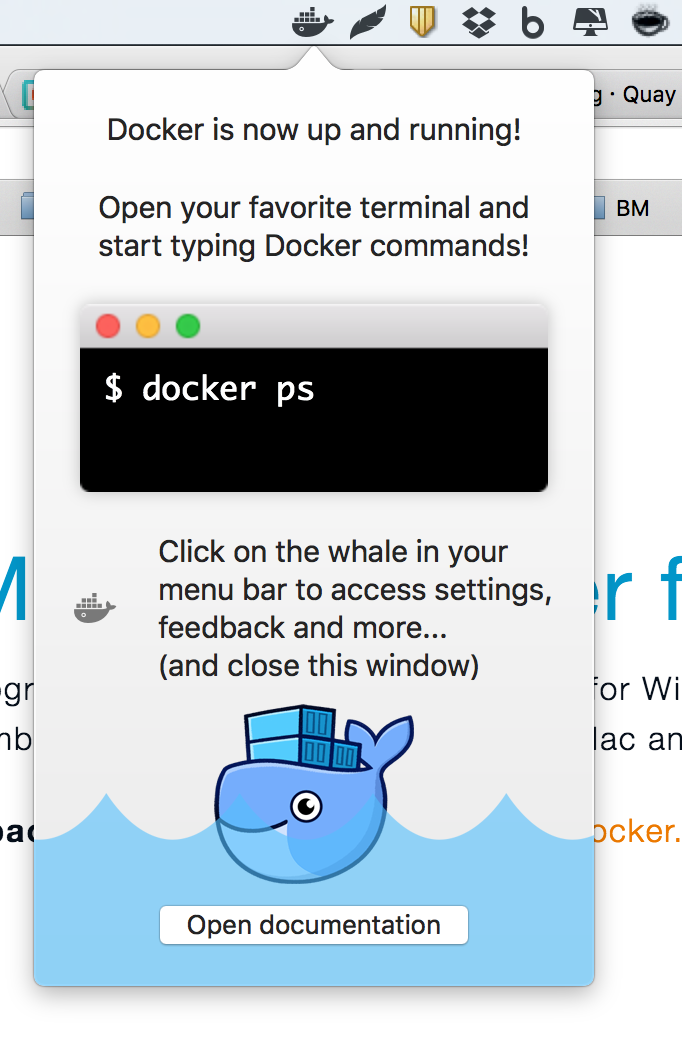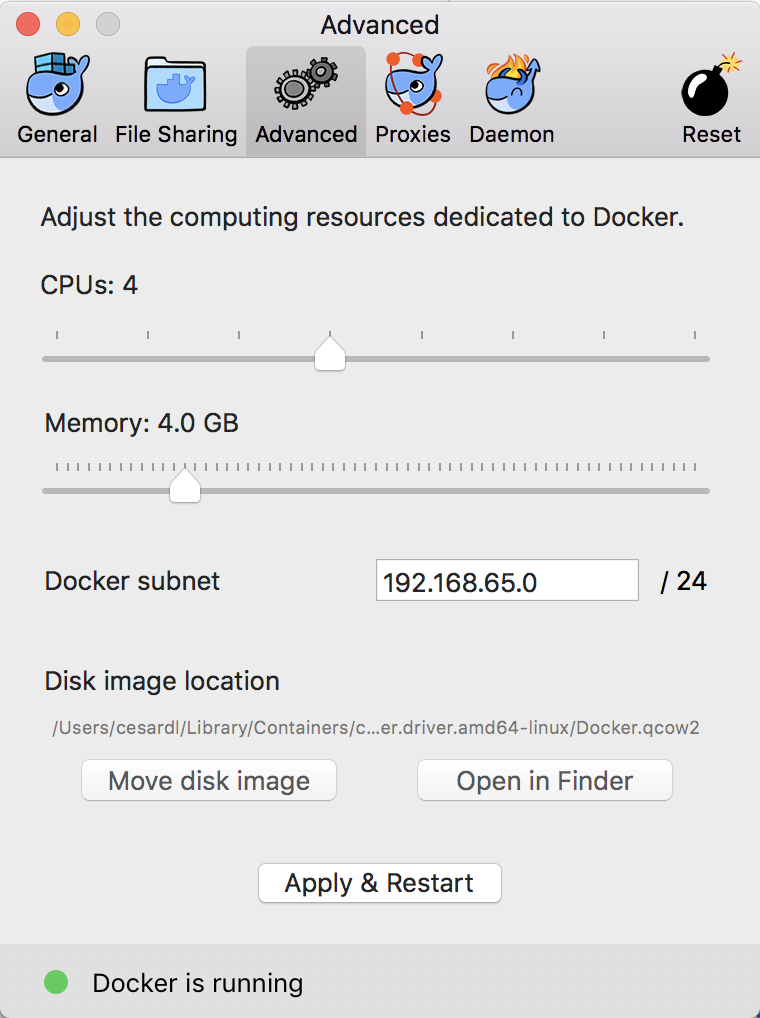

The default is 1 GB.ĭisk image size: Specify the size of the disk image.ĭisk image location: Specify the location of the Linux volume where containers and images are stored. Swap: Configure swap file size as needed.

To increase the RAM, set this to a higher number. Memory: By default, Docker Desktop is set to use 2 GB runtime memory,Īllocated from the total available memory on your Mac. Higher number to decrease, lower the number. To increase processing power, set this to a On the Advanced tab, you can limit resources available to Docker.ĬPUs: By default, Docker Desktop is set to use half the number of processorsĪvailable on the host machine. The Resources tab allows you to configure CPU, memory, disk, proxies, network, and other resources.

This information helps Docker improve and troubleshoot the application. Send usage statistics: Docker Desktop sends diagnostics, crash reports, and usage data. Securely store Docker logins in macOS keychain: Docker Desktop stores your Docker login credentials in macOS keychain by default. Include VM in Time Machine backups: Select this option to back up the Docker Desktop virtual machine. You can manually check for updates anytime by choosing Check for Updates from the main Docker menu.
Docker for mac not connecting login update#
Start Docker Desktop when you log in: Automatically starts Docker Desktop when you open your session.Īutomatically check for updates: By default, Docker Desktop automatically checks for updates and notifies you when an update is available. On the General tab, you can configure when to start and update Docker: Menu bar and configure the runtime options described below. $ docker image ls $ docker image rm nginxĬhoose the Docker menu > Preferences from the $ docker container ls -a $ docker container rm webserver $ docker container ls $ docker container stop webserver


 0 kommentar(er)
0 kommentar(er)
